By Jeon Misun
World's lone divided county where ecology, history and hiking meet at country's northernmost point
At the northernmost tip of Gangwon-do Province, two counties both named Goseong-gun stand face to face, divided by the Demilitarized Zone (DMZ) dividing the two Koreas. Born from the painful scars of national division, this border area is where ecology, peace and culture intersect.
Situated along the DMZ, Goseong-gun has been transformed from a frontline outpost of national security into a popular destination for hiking and cultural exploration. The DMZ Peace Trail in the county is one of 100 provincial destinations selected by the Ministry of Culture, Sports and Tourism under its "Local 100" initiative.
Walking the trail shows the rich and multilayered charm of the DMZ.
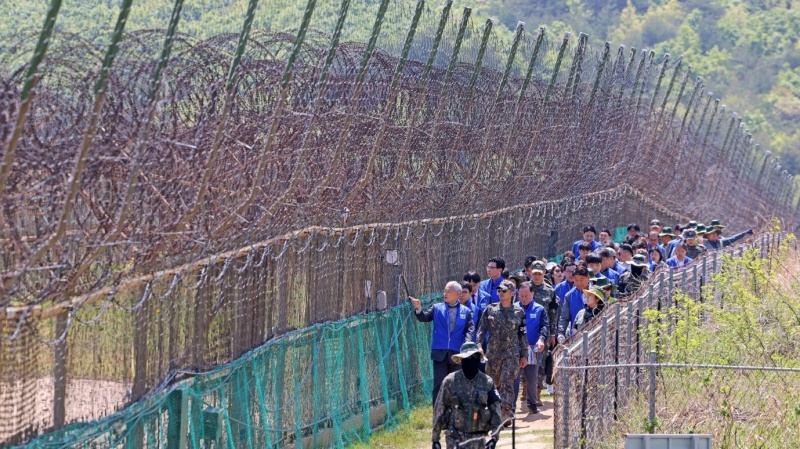
Minister of Culture, Sports and Tourism Yu In Chon on May 8 walks along the barbed wire fence of the DMZ Peace Trail in Goseong-gun County, Gangwon-do Province, accompanied by members of the "Local 100" tourism program. (Ministry of Culture, Sports and Tourism)
Two counties, South and North
Goseong-gun is the world's lone place with the same name on both sides of a divided nation. The 1953 Armistice Agreement that ceased fighting in the Korean War drew the Military Demarcation Line, splitting the county in half.
Today, Goseong-gun covers 664.55 square km in South Korea and that in North Korea 858.65 square km. Both are still on administrative maps but marked separately.
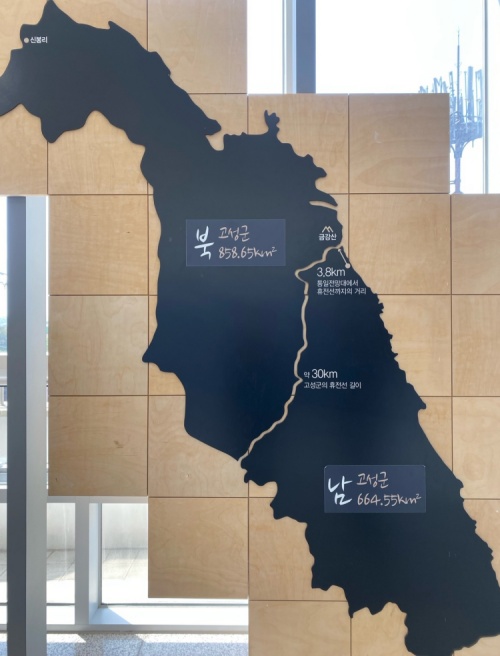
This guide map at the Goseong Unification Observatory in Goseong-gun County, Gangwon-do Province, shows how the county was divided by the Military Demarcation Line after the 1953 armistice was signed. (Jeon Misun)
Northernmost civilian-accessible point and end of Korea Dulle Trail
The DMZ around Goseong-gun is geographically unique as the northernmost point of the Korean Peninsula open to civilian access. From the Goseong Unification Observatory, visitors can clearly see Goseong-gun County and Geumgangsan Mountain in North Korea with the naked eye. The striking scenery of the sea, mountains and barbed wire evokes a complex blend of beauty, tension and sorrow.
This area is also the end of the Korea Dulle Trail, a 4,500-km route that graces the coastlines and border regions of South Korea. Starting from the southern coast, the trail winds along the East Sea and Yellow (West) Sea before concluding at the northernmost DMZ in Goseong-gun.
Connecting nature, people and history, the trail is more than just a walking path; it provides a meaningful experience of following the traces of time and division carved into the land.
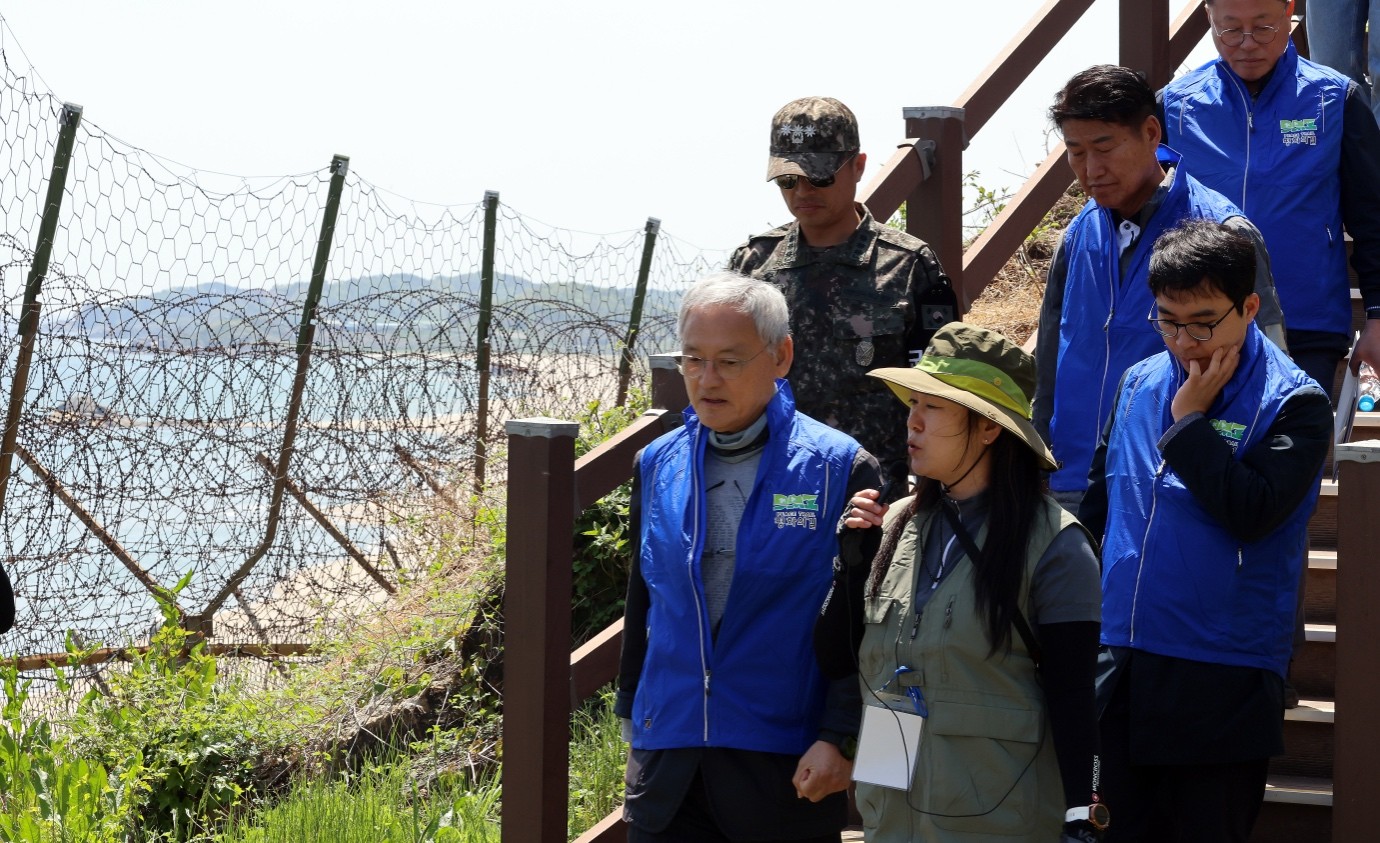
Minister of Culture, Sports and Tourism Yu In Chon on May 8 walks while listening to a guide on his hike of the DMZ Peace Trail around Goseong-gun County, Gangwon-do Province, a location that is the northernmost point of the Korean Peninsula and the end of the 4,500-km Korea Dulle Trail. (Ministry of Culture, Sports and Tourism)
History of national division and site for education
The Goseong-gun section of the DMZ holds high educational value. From the observatory, visitors can see North Korea beyond the barbed wire fence to sense the reality of the zone separating both Koreas.
The nearby DMZ Museum is an archive of the Korean War, national division, traces of the Cold War and aspirations for peace. Beyond a tourist spot, the area reminds visitors of the history and memories that must be preserved.
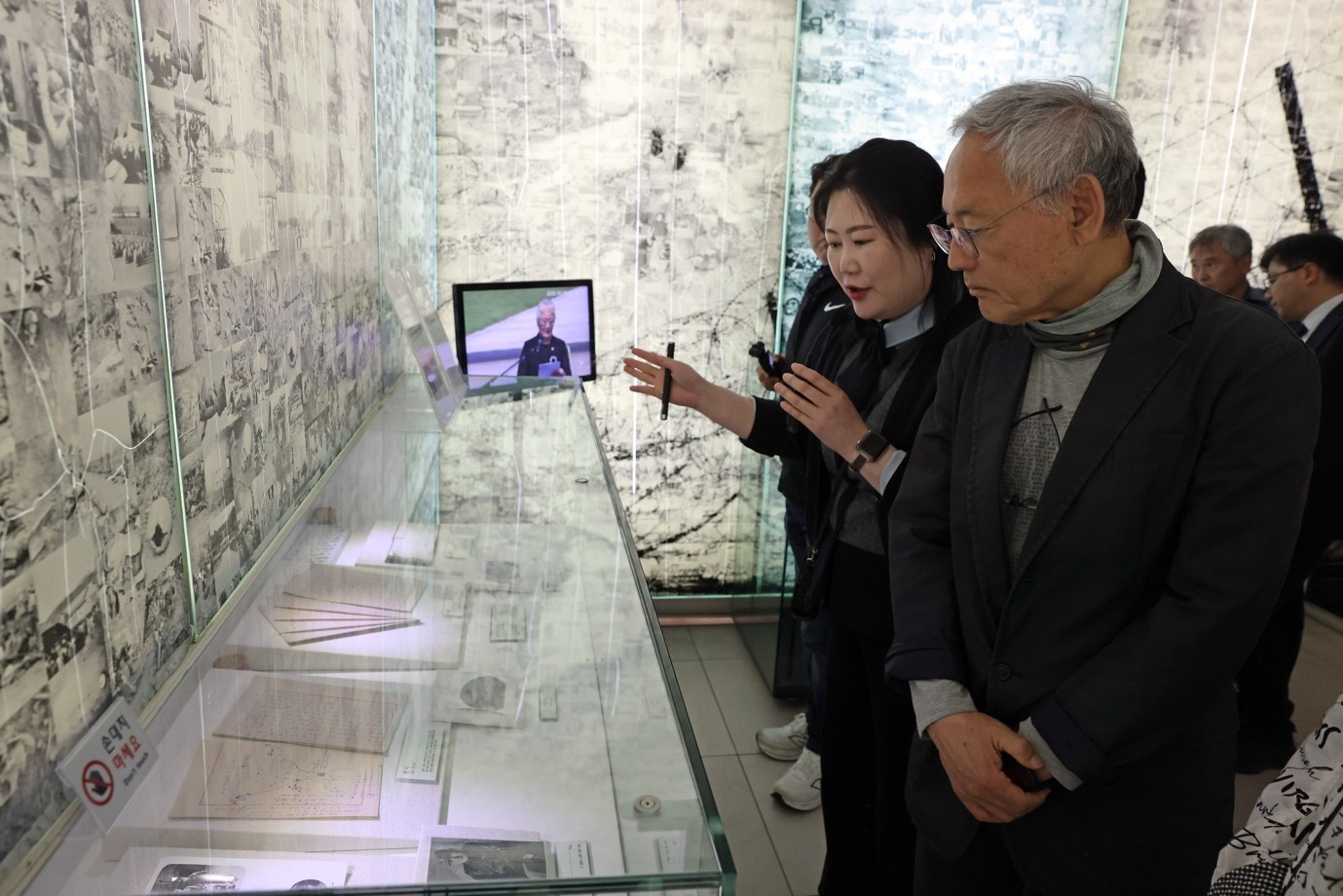
Minister of Culture, Sports and Tourism Yu In Chon on May 8 listens to a guide during his visit to the DMZ Museum in Goseong-gun County, Gangwon-do Province. The facility preserves the history of the border region and promotes the value of peace by exhibiting materials on the Korean War, division of the peninsula, and formation and transformation of the DMZ. (Ministry of Culture, Sports and Tourism)
Where nature and tourism meet
Decades of restricted access have turned the Goseong-gun area of the DMZ into an ecological haven. Diverse wildlife inhabit this area like endangered species such as mountain goats, Asiatic black bears and red-crowned cranes.
Parts of the zone have been opened as eco-trails and sites for environmental education and research. Blending ecology, national security, history and trekking, Goseong-gun is a space created by both nature and people.
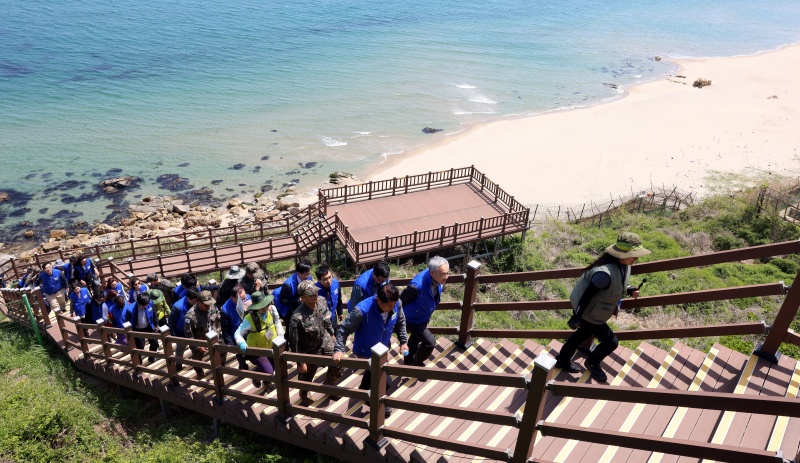
Minister of Culture, Sports and Tourism Yu In Chon on May 8 walks along a coastal boardwalk near a barbed wire fence in Goseong-gun County, Gangwon Province, as part of the DMZ Peace Trail. This area has high ecological value given its longstanding ban on civilian access that has led to a well-preserved ecosystem. (Ministry of Culture, Sports and Tourism)
The Goseong-gun section of the DMZ is a multifaceted space where nature and people coexist amid the scars of national division. Walking here means more than simply reaching the country's northernmost point; this journey brings visitors to the divided present and provokes contemplation of peace.
Perhaps one day, the separated county can again be called by one name.
Local 100: regional culture through 100 stories
The Ministry of Culture, Sports and Tourism's "Local 100" initiative seeks to find and share unique cultural assets and appeal of provincial regions in Korea. The goal is to highlight the diversity and identity of regional culture to the public by showcasing cultural resources and narratives often overlooked by the mainstream.
Selected through recommendations from local governments and public panels and subsequently a rigorous review process, the 100 destinations, pieces of content and figures represent the authenticity and creativity of each region. Together, they tell "100 unique stories" rooted in daily life in the provinces.